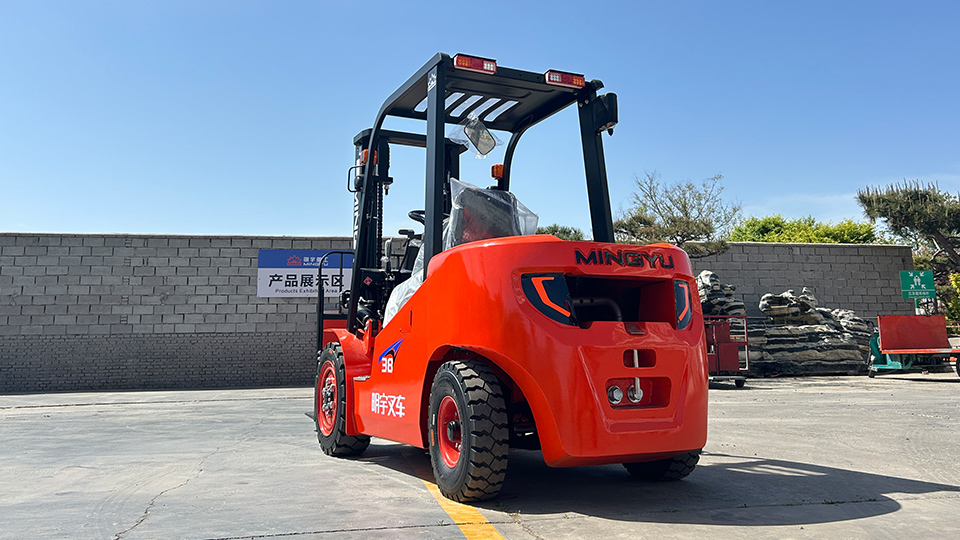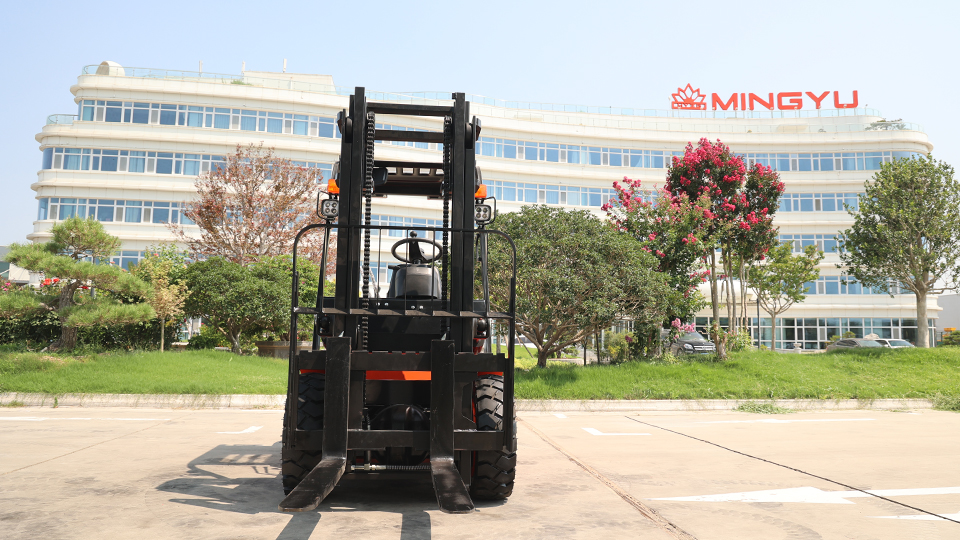
The definitive answer to the question, "Can you get your forklift license online?" is both a resounding "Yes" and a critical "But."
In the modern landscape of industrial safety training, online courses have revolutionized access to knowledge, offering unprecedented convenience and cost-effectiveness. However, the regulatory framework, particularly the U.S. Occupational Safety and Health Administration’s (OSHA) standards, mandates a specific, multi-phased approach to forklift operator certification. While the theoretical or "classroom" portion is perfectly suited—and widely accepted—for online delivery, the full, legally compliant certification process still requires an essential in-person, hands-on component.
This article delves into the technicalities of forklift operator certification, dissecting the training requirements, evaluating the role and validity of online courses, and providing a step-by-step guide to achieving full compliance.
1. The Legal and Technical Foundation: OSHA's Mandate
In the United States, a "forklift license" is not a driver's license issued by a state agency but rather a forklift operator certification issued by the employer. This certification is mandated by OSHA under 29 CFR 1910.178 (l), which governs Powered Industrial Trucks (PITs). The core of this regulation is the requirement that every employer ensure that each powered industrial truck operator is competent to operate a powered industrial truck safely, as demonstrated by the successful completion of a training and evaluation program.
OSHA’s training program is explicitly broken down into three distinct, non-negotiable phases:
Phase 1: Formal Instruction (The Knowledge Component)
This phase is the theoretical part of the training. It is designed to impart essential knowledge through traditional and modern didactic methods.
Content: Must cover general principles of safe operation, warnings, precautions, load handling, vehicle stability, inspection, maintenance, operating instructions, and the differences between automobiles and forklifts.

Delivery Methods: OSHA specifically allows for a combination of:
Lecture
Discussion
Interactive Computer Learning (i.e., Online Courses)
Video Tape
Written Material
Phase 2: Practical Training (The Demonstration Component)
This phase introduces the trainee to the physical equipment and the workplace.
Content: Involves an equipment-specific demonstration of how to perform the various tasks and maneuvers safely.
Delivery Methods: Must be hands-on, conducted by a qualified trainer, and include practical exercises performed by the trainee, focusing on the specific type of PIT the operator will use and the specific conditions of the workplace.
Phase 3: Evaluation of the Operator's Performance (The Competency Component)
This is the final test of proficiency and is the ultimate step in the certification process.
Content: An in-person assessment to ensure the operator can safely and competently apply the learned knowledge and skills in the actual workplace environment.
Delivery Methods: Must be a practical, in-the-workplace evaluation conducted by the employer or a qualified person designated by the employer.
The Employer's Responsibility
Crucially, OSHA makes it the employer’s responsibility to certify that the operator has completed the training and evaluation. The employer must maintain a record of the certification, including the name of the operator, the date of the training, the date of the evaluation, and the identity of the person(s) performing the training or evaluation.
2. The Role of Online Forklift Training
Given the three-part mandate, online forklift training courses have emerged as the most flexible and cost-effective solution for completing Phase 1: Formal Instruction.
The "Yes" to Online Forklift Training
Convenience and Flexibility: Online courses are self-paced, can be completed from any location with an internet connection, and are available 24/7. This is a massive advantage for individuals seeking certification outside of standard working hours or for employers managing large, geographically dispersed workforces.
Cost-Effectiveness: Online programs are typically significantly cheaper than traditional, off-site, in-person classroom training sessions. Costs for online courses often range from $50 to $100, compared to hundreds of dollars for full, in-person programs.
Documentation: Reputable online providers will issue a certificate of completion (often in PDF format, sometimes with a printable wallet card) instantly upon passing the theoretical exam. This serves as proof that the individual has successfully completed the formal instruction portion of the OSHA requirement.
Recertification: Online courses are an excellent, streamlined option for experienced operators whose certification is due for renewal (required at least every three years).
The Critical "But" (The Certification Gap)
No online course, by itself, can grant you full, OSHA-compliant forklift operator certification.
The key limitation of any 100% online program is its inability to fulfill the hands-on requirements of Phase 2 (Practical Training) and Phase 3 (Performance Evaluation). Operating a powered industrial truck is a physical skill that involves steering, load stability dynamics, spatial awareness, and maneuvering—all of which must be demonstrated and evaluated in person, on the specific equipment the operator will use, and within the actual working environment.
An online course provides the theoretical knowledge; it does not provide the practical skills or the legal certification. The certificate you receive from an online provider only attests to your successful completion of the formal instruction.
3. How to Achieve Full, OSHA-Compliant Certification
The most effective and legally compliant path to certification is a Blended Learning Approach that leverages the efficiency of online training while adhering to the necessity of in-person, practical evaluation.
Step 1: Complete the Formal Instruction (Online)
Enroll in a reputable, OSHA-compliant online forklift training course. Ensure the course covers all the mandated topics for general industry (29 CFR 1910.178) and/or construction (29 CFR 1926.602(d)), including the various classes of powered industrial trucks.

Deliverable: A Certificate of Completion for the "Formal Instruction" or "Classroom" portion.
Step 2: Receive Hands-On Training (In-Person/On-Site)
This step must be conducted by your employer or a qualified person designated by the employer. This person must have the requisite knowledge, training, and experience to train and evaluate operators.
For New Operators: This will involve an extensive period of practical exercises, where the operator learns to perform tasks like pre-shift inspections, maneuvering in tight spaces, lifting and lowering loads, driving on ramps, and parking—all on the actual equipment they will be using.
For Experienced Operators: This may be a shorter, familiarization process if the equipment or workplace conditions have changed since their last certification.
Step 3: Pass the Performance Evaluation (In-Person/On-Site)
After the hands-on training, the employer’s designated evaluator must formally observe and assess the operator’s ability to safely operate the forklift in the actual work environment. This is the final and most critical step.
Deliverable: A signed Operator Performance Evaluation Form (often provided by the online training company or created by the employer).
Step 4: Employer Certification
Once the operator has successfully completed all three phases, the employer signs the evaluation form and/or a final certification document, confirming that the operator is competent and fully certified to operate a specific class of powered industrial truck in that specific workplace.
Deliverable: The official, final Forklift Operator Certification Record (maintained by the employer) and the operator's wallet-sized certification card.
4. Certification Validity and Renewal Requirements
Forklift certification is not a permanent status. Maintaining competency is a continuous requirement.
Validity Period
OSHA requires that the performance of every powered industrial truck operator must be evaluated at least once every three years from the date of the previous evaluation. The certification is valid for this three-year period.
Refresher Training and Re-evaluation
Refresher training and re-evaluation are explicitly required under several circumstances, even if the three-year mark has not been reached:
The operator is involved in an accident or a near-miss incident.
The operator has been observed operating the truck in an unsafe manner.
The operator has been assigned to operate a different type of truck (requiring training on the new type).
A condition in the workplace changes in a manner that could affect safe operation.
An evaluation reveals that the operator is not operating the truck safely.
For recertification (the three-year renewal), most operators choose to take a full or abridged online refresher course (Phase 1) and then undergo a mandatory, quick in-person performance evaluation (Phase 3) by their employer.
5. Technical Advantages and Disadvantages: Online vs. In-Person
Feature Online Training (Formal Instruction Only) Full In-Person Training (Classroom + Practical)
Cost Low ($50 - $100) High ($200 - $500+)
Flexibility Maximum. Self-paced, 24/7 access, no travel. Limited. Fixed schedule, requires travel.
Hands-on Experience None. Must be supplemented by employer. Included (but often generalized/simulated).
Site-Specific Training None. Generic instruction only. Limited. Must be customized by the employer.
OSHA Compliance Status Partial. Satisfies only the "Formal Instruction" requirement. Potentially Full, if the course covers all three phases and is conducted by the employer or an accredited third party acting as the employer's agent.
Ideal For Experienced operators, recertification, and providing initial theoretical knowledge. New operators requiring foundational, supervised driving practice.
Conclusion
The evolution of technology has made the first and most accessible step toward forklift certification—the Formal Instruction—fully available and efficient through online courses. These programs deliver essential, OSHA-compliant theoretical knowledge with unparalleled convenience.
However, the nature of operating heavy, potentially dangerous machinery dictates a higher standard of training. The online portion is a necessary prerequisite, but it is not the final certification. Full compliance with OSHA standards requires the integration of this online theoretical knowledge with mandatory, equipment-specific, on-site practical training and a rigorous performance evaluation conducted by the operator's employer.
Therefore, for anyone asking, "Can I get my forklift license online?" the most technically accurate advice is to embrace the blended approach: Complete your theoretical training online for speed and savings, then coordinate with your current or prospective employer to fulfill the required hands-on practice and final, in-person performance evaluation. This is the only path to a fully legitimate and legally compliant forklift operator certification.
Name: selena
Mobile:+86-13176910558
Tel:+86-0535-2090977
Whatsapp:8613181602336
Email:vip@mingyuforklift.com
Add:Xiaqiu Town, Laizhou, Yantai City, Shandong Province, China